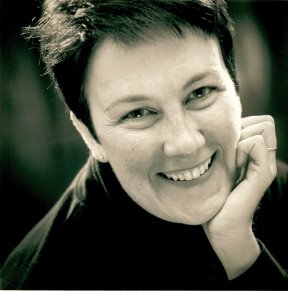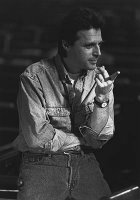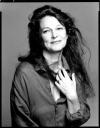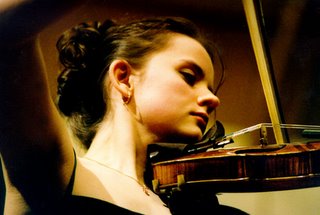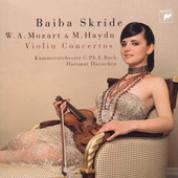Classical Month in Washington (December)
Classical Month in Washington is a monthly feature that appears on the first of the month. If there are concerts you would like to see included on our schedule, send your suggestions by e-mail (ionarts at gmail dot com). Happy listening!
Thursday, December 1, 7 pm; Friday, December 2, 8 pm; Saturday, December 3, 8 pm
National Symphony Orchestra, with Lang Lang, piano
Music by Chopin (first piano concerto), Schumann, and Walton (first symphony, 1968 version)
Kennedy Center Concert Hall
See the review by Robert R. Reilly (Ionarts, December 2)
Thursday, December 1, 7:30 pm
Wolfgang Holzmair, baritone, and Russell Ryan, piano
Austrians in Exile: Songs by Eric Zeisl, Franz Mittler, and Robert Fürstenthal
Embassy of Austria
See the review by Jens F. Laurson (Ionarts, December 5)
Thursday, December 1, 8 pm
Let's Fall in Love: A Tribute to Harold Arlen (b. 1905)
Baltimore Symphony Orchestra, with conductor Andrew Constantine and John Pizzarelli, guitar
Music Center at Strathmore
See the review by Mark J. Estren (Washington Post, December 3)
Thursday, December 1, 8 pm
A Royal Christmas, with Andrea Bocelli and Denyce Graves
Royal Philharmonic Orchestra, Westminster Concert Choir, Royal Ballet of Winnipeg
MCI Center
See the review by Tim Page (Washington Post, December 3)
Thursday, December 1, 8 pm (December 2-3, 8 pm; December 4, 3 pm)
Haydn, The Creation
American University Chorus and Symphony Orchestra
Katzen Arts Center, American University
Friday, December 2, 7:30 pm
National Association of Professional Asian American Women, 4th Annual Memorial Concert in Honor of Susanna "Susie" Kim
Kennedy Center, Terrace Theater
Friday, December 2, 7:30 pm
17th Annual Christmas Concert for Charity (Admission is free: a collection will be taken to benefit Save Our Aging Religious)
Choir of the Basilica of the National Shrine, Choirs and Orchestra of Catholic University
Basilica of the National Shrine of the Immaculate Conception
Friday, December 2, 7:30 pm; Sunday, December 4, 4 pm
Handel's M-word
Combined Choirs of Washington National Cathedral, WNC Baroque Orchestra
Washington National Cathedral
Friday, December 2, 8 pm
Amelia Trio, with flutist Eugenia Zukerman
Music by Beethoven, Roussel, and Mendelssohn
Library of Congress
Friday, December 2, 8 pm
Aulos Ensemble, French Baroque Christmas concert
The Barns at Wolf Trap
Friday, December 2, 8 pm; Sunday, December 4, 2 pm
Gounod, Roméo et Juliette
Virginia Opera
George Mason University Center for the Arts (Fairfax, Va.)
See the review by Cecelia Porter (Washington Post, December 5)
Friday, December 2, 8 pm
Zhang Daxun, bass, and Tomoko Kashiwagi, piano
Embassy of the People's Republic of China
Embassy Series
Saturday, December 3, 7:30 pm
Stephen Salters, baritone, and David Zobel, pianist
Washington premiere of William Bolcom, To My Old Addresses, and music by Ravel, Michael Ching, and others
Vocal Arts Society
Kennedy Center Terrace Theater
See the review by Stephen Brookes (Washington Post, December 5)
Saturday, December 3, 8 pm
National Philharmonic: Handel's M-Word
Music Center at Strathmore
See the review by Mark J. Estren (Washington Post, December 5)
Sunday, December 4, 3 pm
Suspicious Cheese Lords, Christmas Concert
Franciscan Monastery
Sunday, December 4, 3 pm
The Consort Sings Christmas
Washington Bach Consort
National Presbyterian Church
See the review by Grace Jean (Washington Post, December 6)
Sunday, December 4, 5 pm
Irina Nuzova, piano [FREE, with admission to the museum]
Phillips Collection
Sunday, December 4, 6:30 pm
Geir Draugsvoll, accordionist [FREE]
Music by Mozart, Grieg, Bach, and Nørgård
Presented in connection with the Norwegian Christmas Festival
National Gallery of Art
See the review by Jens F. Laurson (Ionarts, December 6)
Sunday, December 4, 8 pm
Matt Haimovitz, cello, and Andy Simionescu, violin
Iota Club and Cafe (Arlington, Va.)
See the review by Gail Wein (Washington Post, December 6)
Tuesday, December 6, 12:10 pm
Noontime Cantata: Es ist dir gesagt, Mensch, was gut ist, BWV 45
Washington Bach Consort
Church of the Epiphany (13th and G Streets NW)
Wednesday, December 7, 7:30 pm (also December 8 to 11)
American Ballet Theater, The Nutcracker
Kennedy Center Opera House
See the review by Sarah Kaufman (Washington Post, December 9)
Thursday, December 8, 7 pm (also December 9 to 11)
NSO Pops: Happy Holidays
With conductor Marvin Hamlisch and Children's Chorus of Washington
Kennedy Center Concert Hall
See the review by Andrew Lindemann Malone (Washington Post, December 10)
Friday, December 9, 7:30 pm
Alexis Descharmes and Nicolas Baldeyrou
La Maison Française
See the review by Jens F. Laurson (Ionarts, December 11)
Friday, December 9, 7:30 pm (also December 10 and 11)
Cathedral Choral Society, The Joy of Christmas (Norwegian Christmas Festival)
With soprano Anne-Lise Berntsen and organist Nils Henrik Asheim
Washington National Cathedral
See the review by Mark J. Estren (Washington Post, December 12)
Friday, December 9, 8 pm
Carpentier Quartet
Embassy of Venezuela
Embassy Series
Friday, December 9, 8 pm (also on December 10 and 11)
Terra Nova Consort, Songs and Dance Music from Renaissance Provence
Dumbarton Oaks
Saturday, December 10, 5 pm
4 Hands, 18 Feet (works for two pianos, by Juusela, Tower, Lutoslawski, Poulenc, Adams)
Lisa Emenheiser and Audrey Andrist (21st Century Consort)
Hirshhorn Museum, Ring Auditorium
Saturday, December 10, 7:30 pm
Frederica von Stade, mezzo-soprano, and Richard Stilwell, baritone
Vocal Arts Society
Kennedy Center Terrace Theater
See the review by Tim Page (Washington Post, December 12)
Saturday, December 10, 8 pm
Víkingur Heiðar Ólafsson, piano
Bach's Chromatic Fantasy and Fugue, Schumann's Kreisleriana, Bartók's 15 Hungarian Peasant Songs, and Schubert's ‘Wanderer’ Fantasy
Icelandic Ambassador's Residence (2443 Kalorama Road NW)
Embassy Series
See the review by Jens F. Laurson (Ionarts, December 13)
Sunday, December 11, 3 pm
Vienna Choir Boys
Music Center at Strathmore
See the review by Jens F. Laurson (Ionarts, December 17)
Sunday, December 11, 3 pm and 7:30 pm
Cantate Chamber Singers Holiday Program
The Mansion at Strathmore
See the review by Andrew Lindemann Malone (Washington Post, December 13)
Sunday December 11, 4 pm (St. Luke Catholic Church, McLean, Va.)
Friday, December 16, 7:30 pm (Cathedral of St. Matthew, Washington, D.C.)
Adventsmusik (German music for Advent)
Palestrina Choir
Sunday, December 11, 4 pm
Steven Osborne, piano
Foundation for Advanced Education in the Sciences Concert Series
Landon School Mondzac Performing Arts Center (Bethesda, Md.)
Sunday, December 11, 5 pm
Tom Meglioranza, baritone
Winner of this year’s esteemed Naumburg International Vocal Competition
Phillips Collection
See the review by Charles T. Downey (Ionarts, December 13)
Sunday, December 11, 6:30 pm
Pacifica String Quartet
Music by Beethoven, Janácek, and Mendelssohn
National Gallery of Art, East Building Auditorium
Sunday, December 11, 7:30 pm
Trio Mediaeval (Fortas Chamber Music series)
Kennedy Center, Terrace Theater
See the review by Charles T. Downey (Ionarts, December 13)
Tuesday, December 13, 8 pm
Juilliard School Centennial Anniversary Concert (Mahler's third symphony)
Juilliard School Orchestra, Cathedral Choral Society, and National Cathedral School Choirs
Kennedy Center Concert Hall
See the review by Jens F. Laurson (Ionarts, December 16)
Thursday, December 15, 7 pm (also December 16 to 18)
National Symphony Orchestra: Handel's M-Word, with Washington Chorus
Kennedy Center Concert Hall
See the review by Jens F. Laurson (Ionarts, December 16)
Friday, December 16, 8 pm
Jupiter String Quartet (Stradivari Anniversary)
Music by Haydn (Sunrise quartet), Dutilleux (Ainsi la nuit), and Beethoven (op. 59, no. 1)
Library of Congress
Composer Gunther Schuller will accept his award as a Library of Congress Living Legend at this concert (see my post on November 29)
See the review by Jens F. Laurson (Ionarts, December 18)
Friday, December 16, 8 pm (also December 17, 18, 21-23)
Folger Consort, Corelli and Charpentier
Folger Shakespeare Library
See the review by Charles T. Downey (Ionarts, December 23)
Saturday, December 17, 1:30 pm; Friday, December 23, 1:30 pm
Choral Arts Society of Washington: Christmas Music, with soprano Arianna Zukerman
Kennedy Center Concert Hall
Also on December 18, 7 pm, at Strathmore
See the review by Jens F. Laurson (Ionarts, December 24)
Saturday, December 17, 4 pm; Sunday, December 18, 4 pm
Children's Chorus of Washington: Holiday Concert
National City Christian Church (5 Thomas Circle NW)
Saturday, December 17, 7:30 pm
Robert Russell Bennett: The Many Moods of Christmas
Metropolitan Chorus and Capital City Symphony
Thomas Jefferson Theatre (Arlington, Va.)
Saturday, December 17, 8 pm
Emerson String Quartet with cellist Colin Carr (Brahms, Shostakovich, Schubert quintet)
National Museum of Natural History, Baird Auditorium
Saturday, December 17, 8 pm
Opera Lafayette, Baroque Holiday Chamber Concert (music of Charpentier, Melani, and Monteverdi)
François Loup and other singers, with instruments
La Maison Française
See the review by Charles T. Downey (Ionarts, December 19)
Saturday, December 17, 8:30 pm; Sunday, December 18, 7:30 pm
Amit Peled, cello, and Alon Goldstein, piano
Gildenhorn/Speisman Center for the Arts, Jewish Community Center of Greater Washington (Rockville, Md.)
Sunday, December 18, 2 pm and 4 pm
Choral Arts Society of Washington: Family Christmas Concert
Kennedy Center, Terrace Theater
See the review by Mini-Critic (Ionarts, December 20)
Sunday, December 18, 3 pm
Violins of Lafayette
Black Rock Center for the Arts (Germantown, Md.)
Sunday, December 18, 4 pm
Cantate Chamber Singers, Monteverdi's Vespro della Beata Virgine (Vespers of 1610)
St. Paul's Lutheran Church
See the review by Cecelia Porter (Washington Post, December 20)
Sunday, December 18, 5 pm
Alessio Bax and Lucille Chung, piano four hands
Phillips Collection
See the review by Jens F. Laurson (Ionarts, December 20)
Sunday, December 18, 5 pm; Thursday, December 22, 7 pm
Washington Chorus: Music for Christmas
Kennedy Center Concert Hall
Also on December 23, 8 pm, at Strathmore
See the review by Joe Banno (Washington Post, December 20)
Sunday, December 18, 6:30 pm
Suspicious Cheese Lords
Renaissance and baroque music of the season for men's voices
National Gallery of Art
See the review by Charles T. Downey (Ionarts, December 20)
Sunday, December 18, 8:30 pm; Monday, December 19, 8 pm; Wednesday, December 21, 8 pm
Master Chorale of Washington: Christmas Candlelight Concert
Kennedy Center Concert Hall
See the review by Charles T. Downey (Ionarts, December 22)
Monday, December 26, 6 pm
Hesperus
Kennedy Center, Millennium Stage
Saturday, December 31, 6 pm
Salon Orchestra of Washington
Music of 19th-century Austria
Kennedy Center, Millennium Stage
Saturday, December 31, 8 pm
National Philharmonic: New Year's Eve Celebration
Music Center at Strathmore
Saturday, December 31, 8:30 pm
New Year's Eve at the Kennedy Center
Members of the National Symphony and guest artists
Kennedy Center Concert Hall
——» Go to Classical Month in Washington (November).
